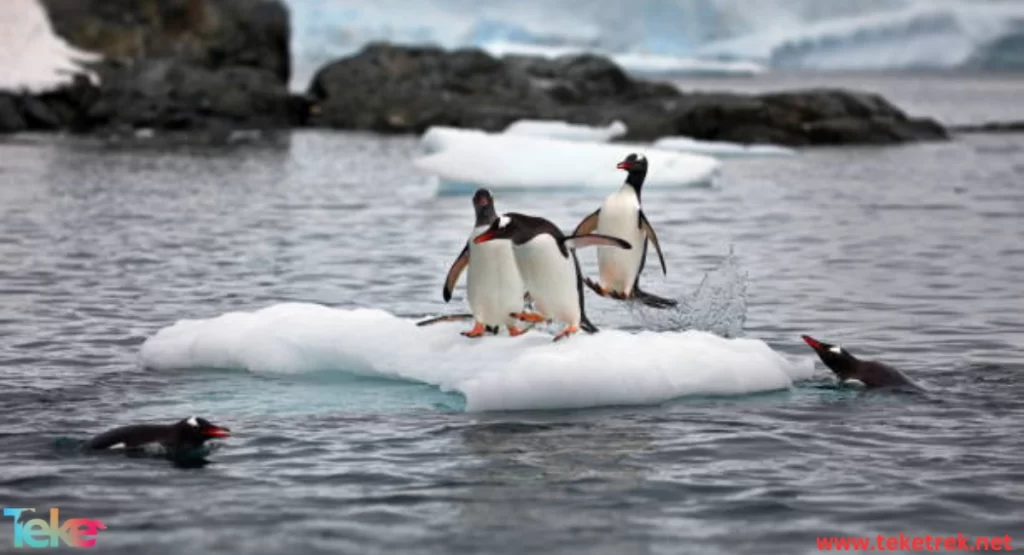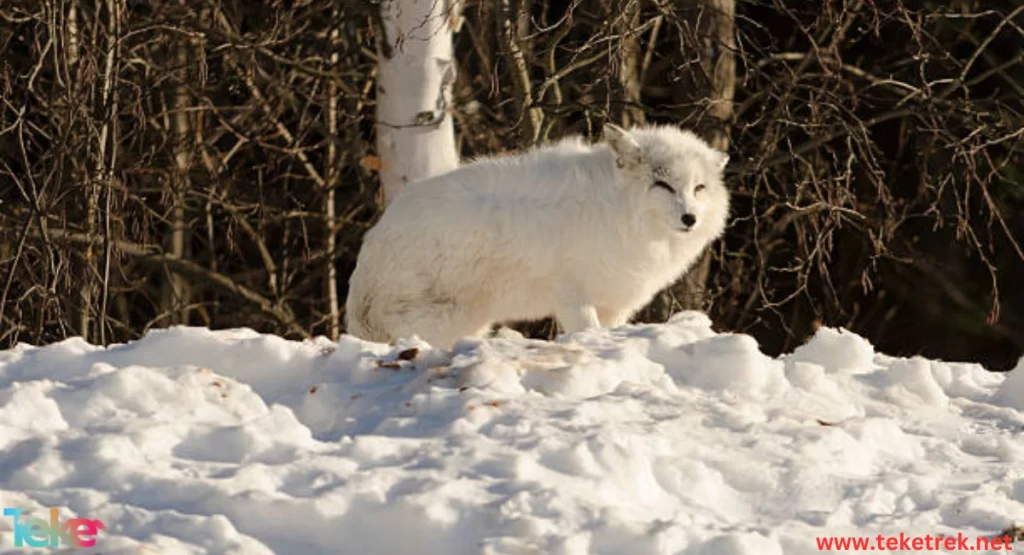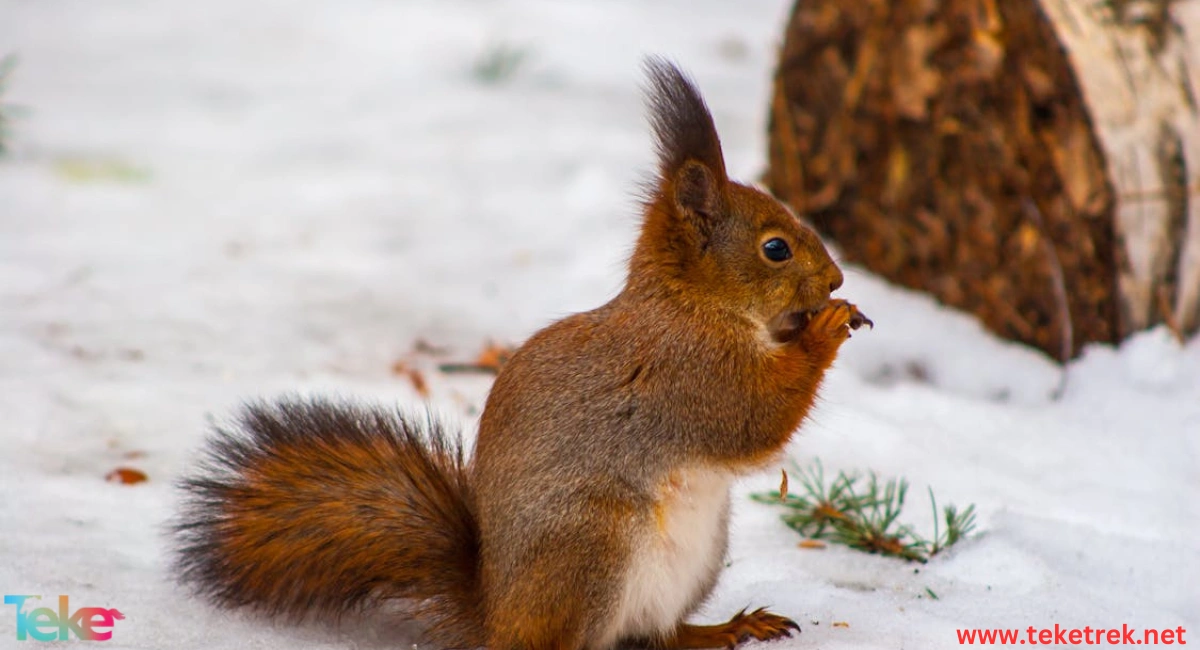What is the difference between hibernation and migration? It is two sides of the same coin, which is the adaptation of animals during the cold winter. When it comes, animals find themselves facing enormous environmental challenges that require amazing adaptations to survive. The extreme cold, heavy snow, and scarcity of food resources make the winter a real test of the ability of living organisms to survive. Adapt to harsh conditions.
Among the main adaptations that animals adopt for survival, hibernation and migration stand out as effective strategies to meet these challenges. Hibernation is a state of long, deep sleep that some animals enter to save energy when food resources are scarce. Migration is a seasonal movement undertaken by some animals to move from areas Cold to warm areas rich in food resources.
These two strategies can be placed at the site of the main adaptations for survival in animals during the winter. Therefore, through the following article, we will explain both processes and highlight them in an exciting journey into the depths and secrets of Mother Nature. Let us begin this amazing journey.
Definition of hibernation:
Hibernation can be defined as a state of long, deep sleep that some animals enter during periods of extreme cold, during which the animal’s vital functions decrease significantly with the aim of reducing energy consumption and preserving life in difficult circumstances. Among the most prominent wild animals that enter into the hibernation process are the following:
Brown bear: This type of animal enters a deep hibernation during the winter, as its body temperature, breathing rates, and heartbeat decrease, as bears rely on the fat they have stored in their bodies during the warm seasons to survive during the hibernation period.
Squirrels: Squirrels store food in their burrows and enter a partial hibernation, waking up periodically to eat the stored food and then returning to sleep.
Bats: Bats hibernate inside caves or some protected places, where their body temperature drops to levels close to the temperature of the surrounding environment, which greatly reduces their energy consumption.
It is worth mentioning that the hibernation process takes place according to the stages that the animal enters, which are as follows:
Reducing metabolic activity, as the animal’s metabolic rate, or so-called metabolism, decreases significantly. This slowing down of vital processes helps the animal reduce the energy consumption required to maintain its basic body functions during the hibernation phase.
The temperature in the animal’s body decreases to match the surrounding environment. This reduces the body’s need to maintain a high temperature, and this works to provide more energy needed for the animal to survive throughout the cold winter period.
Energy consumption: Energy consumption is reduced to a minimum during the hibernation stage, as animals depend on the fat stored in their bodies as the main source of energy during this stage, and this is what helps them stay alive until environmental conditions improve and the necessary food resources return to them.

Definition of immigration:
It is a seasonal movement carried out by animals to move from one place to another in search of better environmental conditions, such as food or a suitable climate. Migration often occurs at specific times of the year in response to changes in the surrounding environment, and is considered a major means of survival and reproduction for many species. Animals, the most famous of which are:
Migratory birds: which are the most prominent examples of seasonal migration. Among the most famous of these birds are the songbirds, swallows, which travel thousands of kilometers from the cold regions of the northern hemisphere to the warm regions of the southern hemisphere.
Whales: Gray whales make long migrations to warm areas with the aim of breeding, in addition to obtaining the necessary food resources to support their growth and survival.
Butterflies: These butterflies make long journeys extending over thousands of kilometers from Canada and the United States to Mexico in search of a warm climate during the winter. The most famous of these butterflies is the monarch butterfly.
The migration process in animals
occurs through the following:
They move long distances by covering huge distances as they search for the appropriate environment that provides the necessary resources for survival and reproduction. Some migratory birds rely on air currents and the Earth’s magnetism as signals in the process of air navigation.
Searching for food that allows it to build food stocks that support its growth and reproduction and thus maintain the environmental balance.
Search for a suitable climate to avoid harsh weather conditions such as extreme cold.

Key differences between hibernation and migration?
Animals adopt different strategies to ensure their survival during the cold winter, and among these strategies are hibernation and migration, where the difference between them lies in the following points:
The main goal of each of them, hibernation is to reduce energy consumption during periods when food resources are scarce and environmental conditions are harsh, so animals enter a deep sleep in order to save that energy, while migration aims to move to another place that provides better food resources and appropriate conditions that ensure The survival of these animals.
Vital activity: Winter hibernation involves reducing vital activity to a minimum, as metabolic rates and body temperature decrease, and heart and breathing rates decrease, while migration requires an increase in vital activity due to traveling long distances, and this requires the consumption of energy to achieve these journeys.
Time: hibernation continues for long periods during the winter season and may extend for a few months until environmental conditions improve, while migration takes place twice a year.
Physiological and behavioral adaptations. In the hibernation phase, metabolic rates are reduced and body temperature is reduced, in addition to building warm shelters and securing food before entering hibernation, while migration includes the development of strong muscles capable of endurance, in addition to the ability to adapt to move through groups and use signals. Environmental such as stars and others in the process of air navigation.
Type of animal: There are some animals that hibernate, such as bears, bats, and squirrels, due to their inability to migrate, while there are some other species that migrate, such as birds, whales, and butterflies.
In conclusion, we find that the answer to the question: What is the difference between hibernation and migration? It reveals to us the ingenuity of wild animals that live in Mother Nature during the cold winter. They follow a hibernation or migration strategy to ensure their survival during this harsh season. These amazing natural phenomena are profound lessons in the resilience of life and how to adapt to environmental changes.





